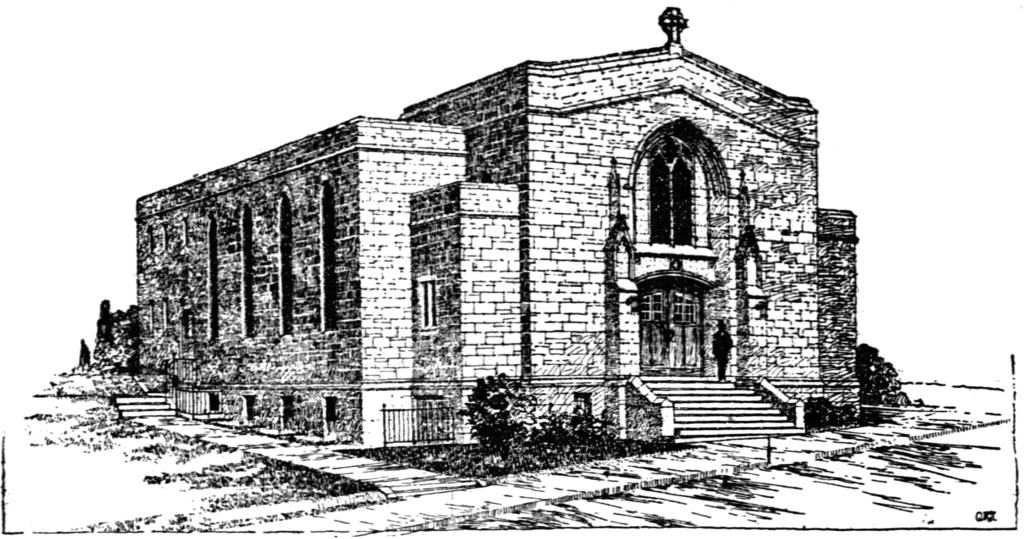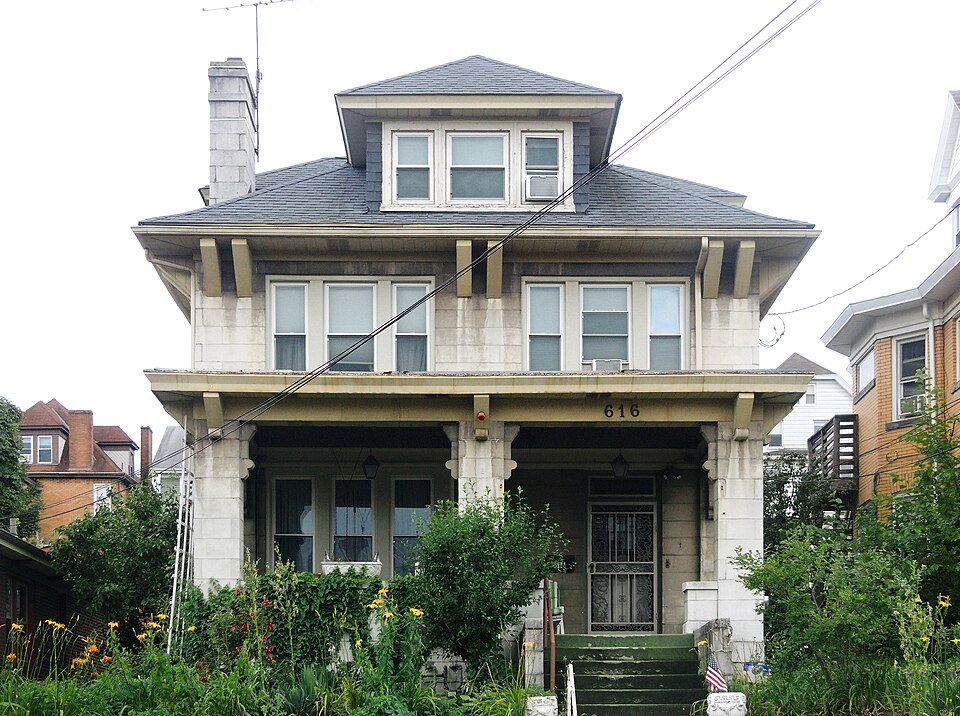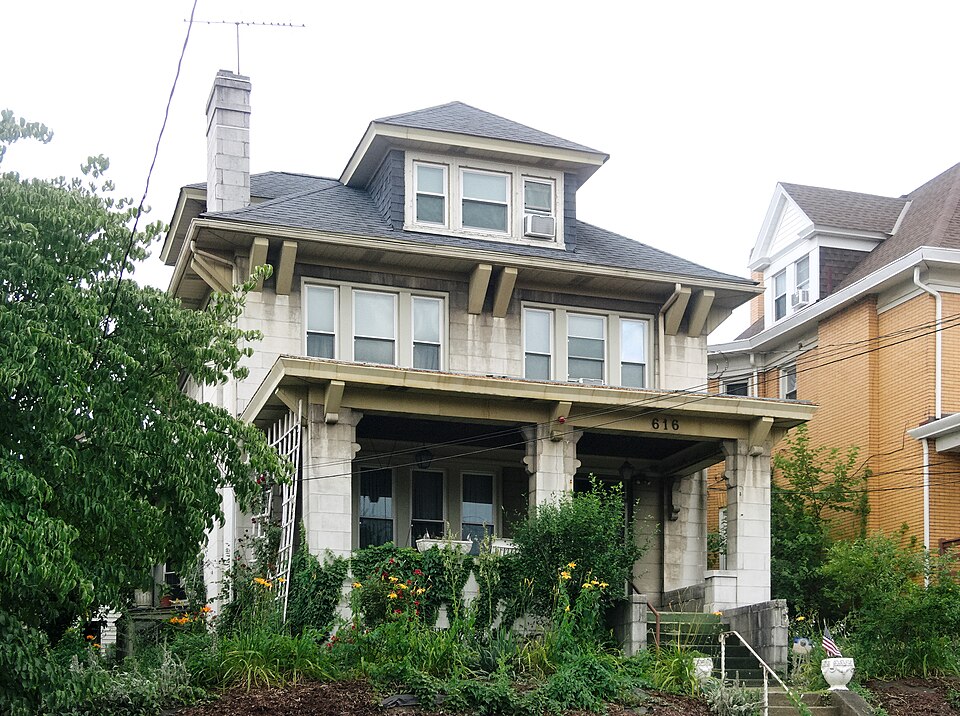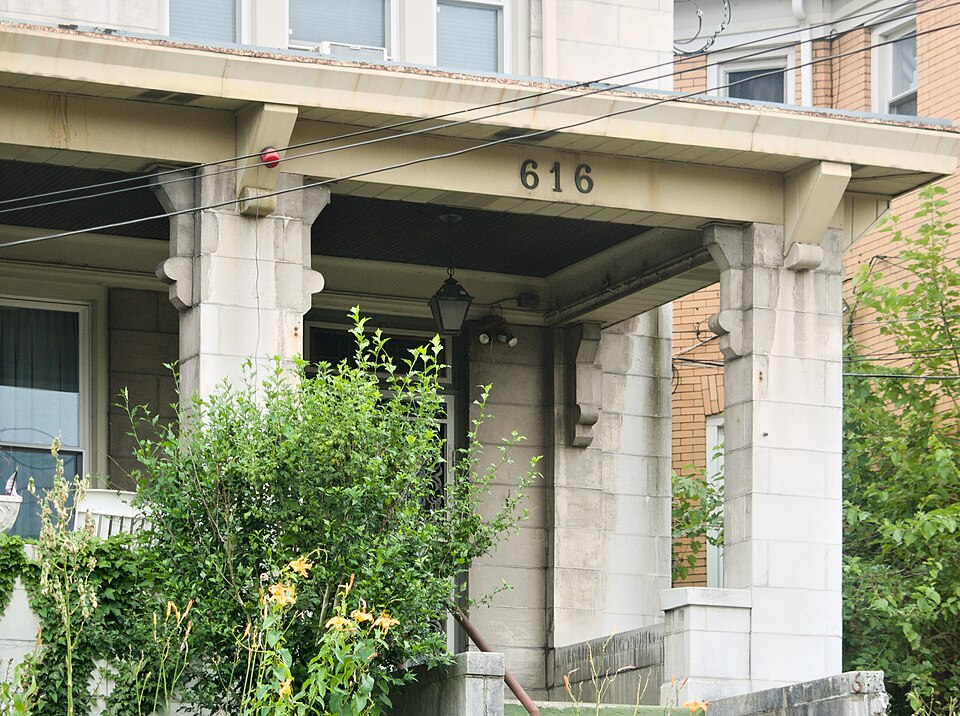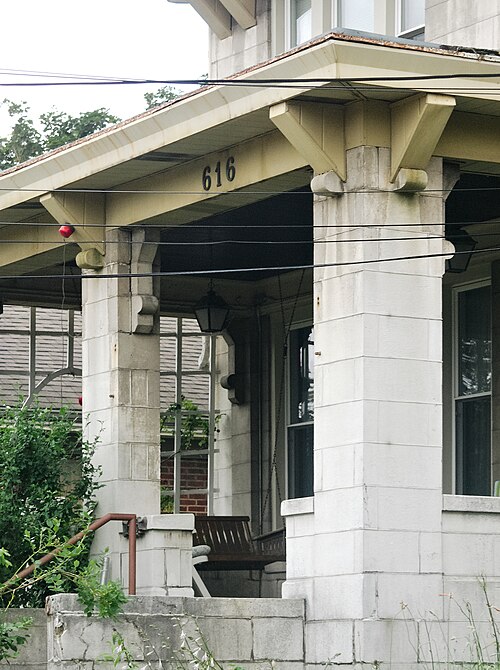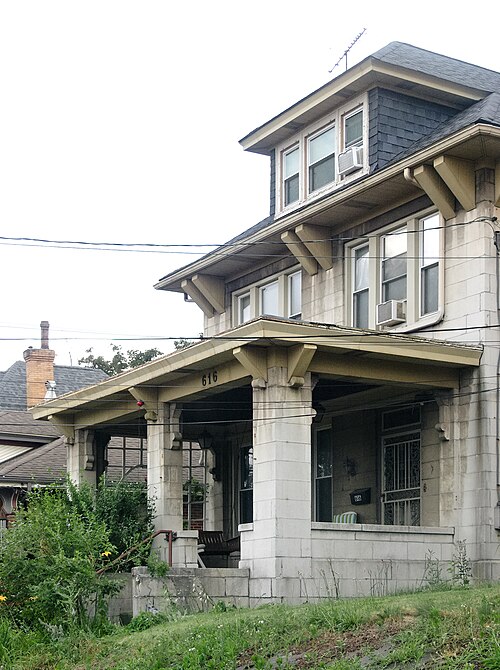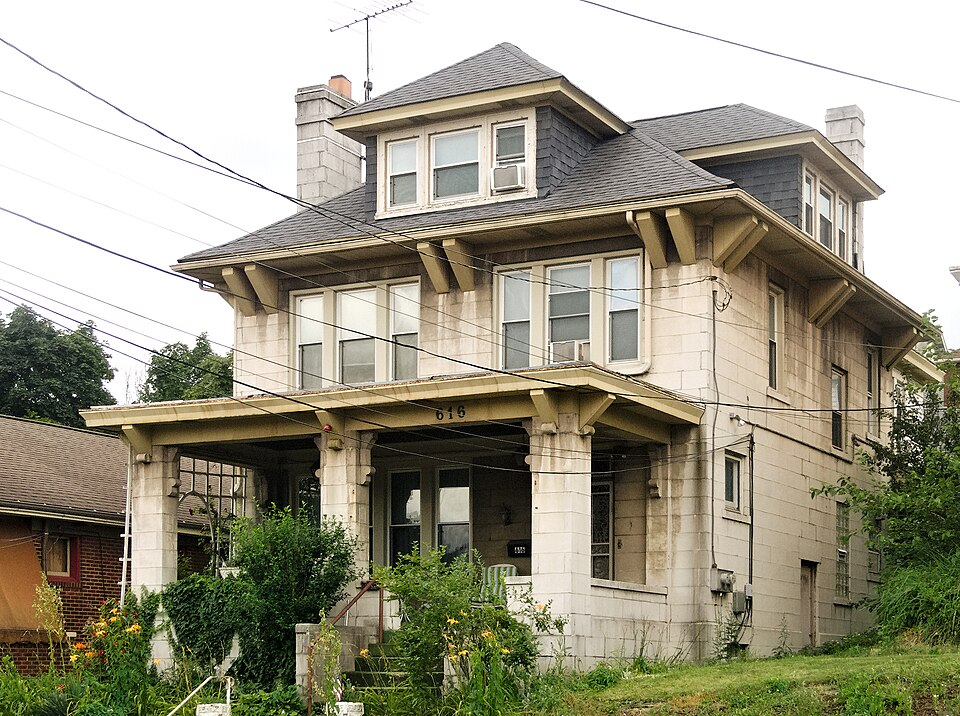
Benno Janssen was one of the titans of Pittsburgh architecture, but even titans take on small projects once in a while. This is a fairly ordinary house on an ordinary street in Brookline, but it was designed by the firm of Janssen & Abbott.1 In spite of revisions that have changed some of the original character, it seems to retain some of the elegant simplicity of Janssen, who never wasted a line.

The front door is set back on the side of the house, which allows a broad front living room opening out on the porch, without dropping visitors right into the living room when they arrive—a clever way of making a narrow lot seem less restrictive.

Comments




